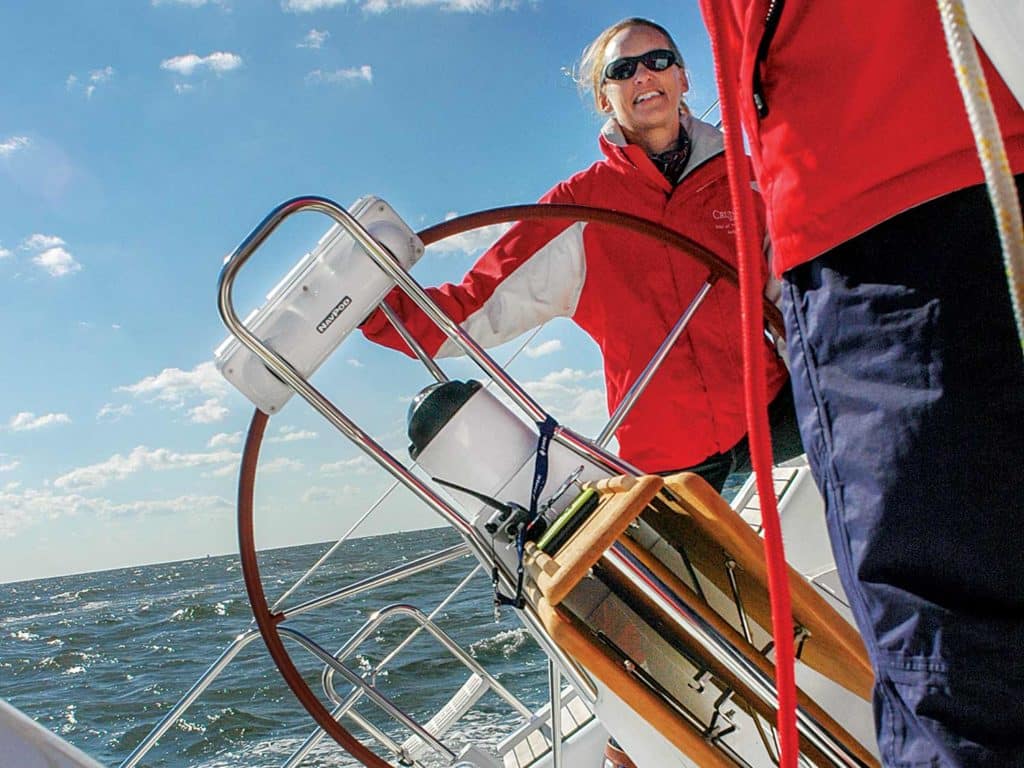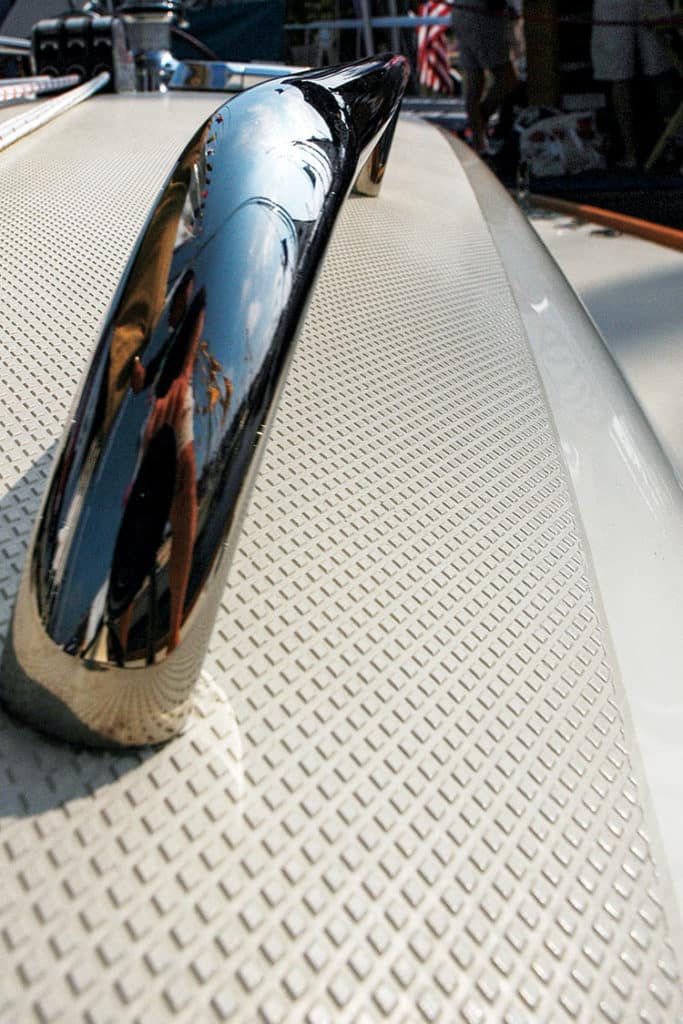
“Man overboard!” It’s a shout no one wants to hear. The U.S. Coast Guard now calls the victim a “person in the water” (PIW). Regardless of how you label the incident, a prompt and efficient recovery is essential — but there’s a lot more to be considered. Accident review analysis often reveals a long list of contributory factors that precede an overboard incident. Two of the most often mentioned, and least often addressed, are slippery decks and lack of handholds.
As with every safety issue, there’s good reason to turn to equipment that may remedy, or perhaps even prevent, what can go wrong. When it comes to MOB/PIW situations, there’s a long list of effective personal safety gear to consider. Most chandleries carry jacklines, tethers and PFD/harness combos that help prevent someone from going over the rail. Such gear, however, is not often used on a 24/7 basis, so when it comes to risk mitigation, it makes sense to eliminate as many of the contributory factors as possible.
You can learn a lot about decks and their safety implications while sailing aboard other people’s boats. Begin with a simple bit of DIY risk analysis. It’s basically a walk around the deck noting slick surfaces, obstructions and risky transition points. Deck geometry plays a key role in safety. When side decks are too narrow, too steeply cambered or overly cluttered with sheet leads and inboard chainplates, the risk increases. There’s nothing wrong with chainplates set in the middle of the side deck as long as there’s room to get around such obstructions. But if you have to climb onto the slick surface of a steeply slanted cabin coaming, or lean over the lifelines on your way to the foredeck, extra care needs to be taken.
It’s hard to remedy poorly designed decks, but it’s pretty easy to cure slippery surfaces. Before turning to nonskid coatings, make sure the friction loss isn’t due to shoe soles losing their grip. Boat shoes have become a fashion statement, as well as seafaring footwear. Tread deterioration and the absorption of greasy chemicals lessen how well they grip the deck. Soles harden with time and become chemically glazed. The shoes may still protect toes, but if they cause you to slip over the side, a stubbed toe is the last thing to worry about. Ironically, this is why so many veteran cruisers slip on their boat shoes as they head for shore and go barefoot while on board. It’s also a bone of contention among safety experts, so rather than wade into the barefoot or not debate, perhaps it’s best to just leave your boat shoes on board and have a second pair dedicated for shore duty.

If your shoe soles pass the test, try one last nonskid cleanup effort. Select a special-purpose deck cleaner (such as Star Brite’s nonskid deck cleaner). If possible, use warm water and a stiff-bristled scrub brush to dislodge surface contaminants. Follow up with a thorough rinse and re-evaluate the friction that’s restored. If all is to no avail, there are single-part and two-part paint/grit coatings that can deliver a better-than-new nonskid surface. Your prior efforts to degrease and scrub away grime and oxidation will still pay off. It’s step one when it comes to prepping the deck for priming and painting.
A variety of coatings are available (Awlgrip, Interlux, Pettit, Epifanes, Kiwigrip, TotalBoat and others), and most manufactures provide detailed DIY guidelines. The complexity of this process will be influenced by the condition of the existing nonskid gelcoat pattern or painted surface. In cases where adhesion has failed and the substrate is starting to lift, extensive sanding will be necessary. But in cases where there’s only some minor gelcoat crazing and surface porosity, a roller-applied epoxy primer can be used to seal the surface. This is followed by the application of either a single-part or a two-part urethane topcoat that incorporates a gritty nonskid additive. The process will both rejuvenate your boat’s good looks and contribute to the safety of the crew.
In cases where the slippery spots are localized, the addition of self-adhering nonskid tapes and sheets of product like Treadmaster can solve the problem. It also makes sense to apply nonskid tape to slippery hatch surfaces. Its highly adhesive nature keeps the tape in place, lessening the hazard of slick, glossy, gelcoated areas of the coach roof and foredeck.
In Part II of this look at deck safety, we’ll explore how handholds and lifelines add to the challenge of keeping the crew on board.
Technical expert Ralph Naranjo is a veteran circumnavigator and ocean racer, and author of The Art of Seamanship.








